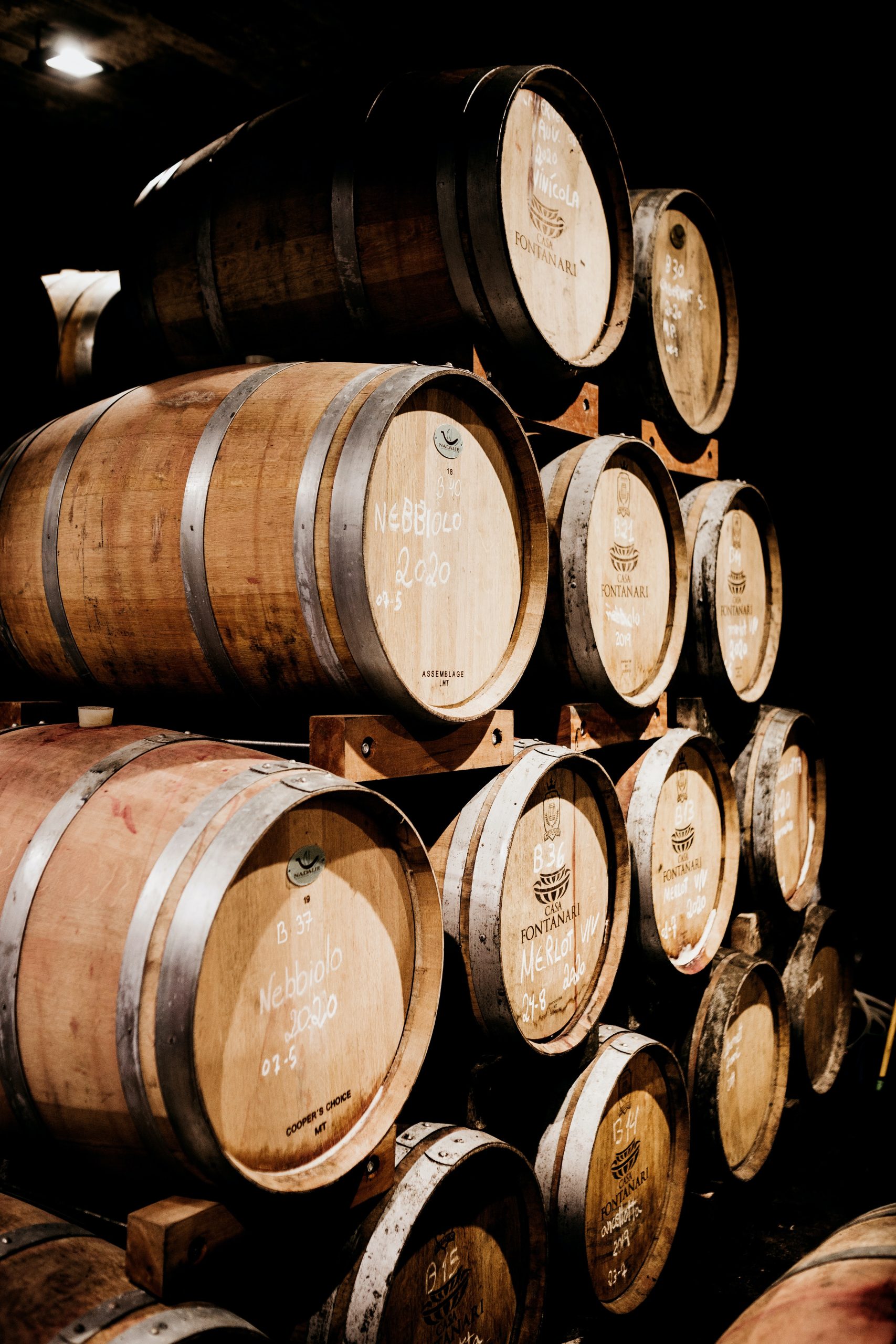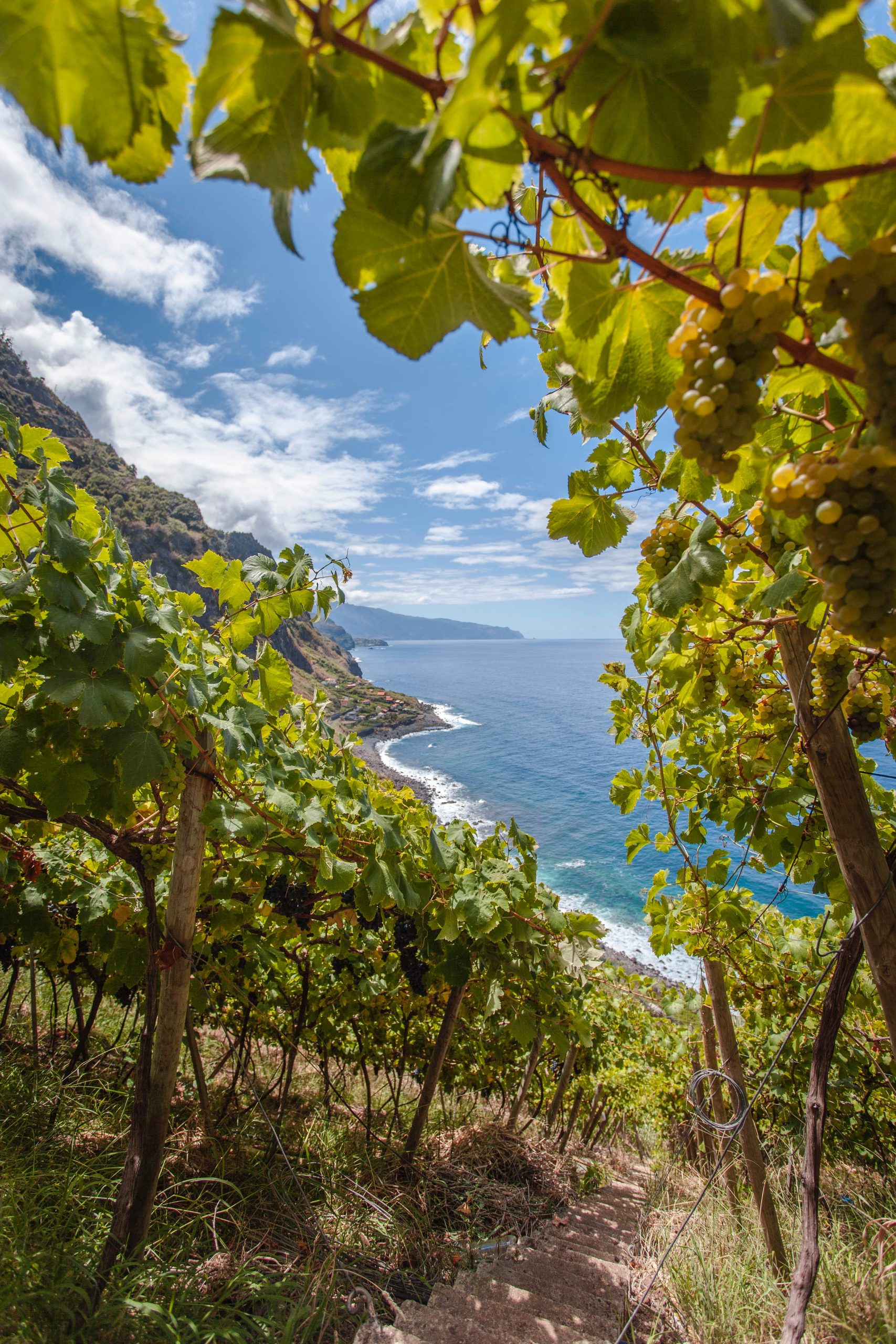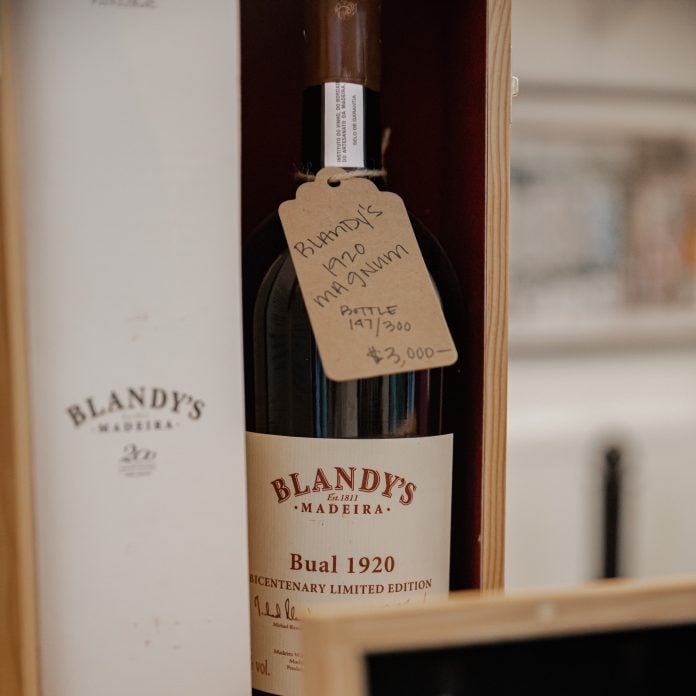Imagine yourself time traveling July 4, 1776, to Independence Hall, in Pennsylvania. The Second Continental Congress ends with the signing of the United States’ Declaration of Independence. Thomas Jefferson takes out a bottle and proposes a toast to this new nation, and the other Founding Fathers agree!
You get your glass and they fill it with this amber-colored liquor and you toast with them “To America!” You take a sip and that taste fills your mouth… It’s a strong drink, slightly sweet, with a hint of burnt caramel and the texture is so smooth!
Well, that was Madeira wine, and by the description it seems like a Medium-Sweet one. It was indeed used by the Founding Fathers to toast after the signing of the Declaration (although I admit we don’t know if it was indeed a Medium-Sweet) and it has been present in important moments throughout history.
Drinking a glass of Madeira wine is, as Winston Churchill once said, “drinking liquid history.”
What is Madeira Wine?
The Madeira wine is a fortified wine made on the Portuguese Madeira Island, right off the coast of Africa. Mainly produced in the Câmara de Lobos, its grapes have to be planted on the Madeira Island since this corresponds to the area of the Demarcated Region of the Madeira Island and the wine is a DOC (‘Denominação de Origem Controlada’ or ‘Controlled Origin Denomination’).
Madeira is a robust and long-lasting wine with a high alcohol content, since it’s made with a distilled grape spirit, being around 17-20% alcohol content. It’s made in different styles, from dry, used as an aperitif, to sweet, used as a digestif, depending on the amount of sugar it has (anywhere from 0-150 g/liter).
You can also find versions of this wine made for cooking, with added salt and pepper, but not fit to use as a drink. It’s used in the French classic ‘Madeira sauce’, used in dishes like roast beef or filet mignon, or in The Cheesecake Factory on its ‘Chicken Madeira’ dish.
Madeira is also said to have some health benefits, if you obviously use it in moderation and take care of its fattening characteristics (due to excess sugar, although this is less problematic with dryer wines).
It’s a similar wine to Port wine, produced on the Douro region, but the difference is in its unique storage and aging process, and it has its own type of glassware that helps savor the wine better.
This is the main product of the Madeira Autonomous Region and a symbol of the archipelago all around the world. Around 4 million Liters of Madeira wine are exported every year. In 1999, this represented around 43% of all the archipelago’s exports.
Other wines are made to mimic the Madeira wine, like in Crimea, California and Texas, and some even use the name “Madeira” or “Madera”. However, according to EU regulations, the use of these terms is only permitted to the wines coming from the Madeira Islands.
Honestly, as the Madeiran producers say, the other wines can never mimic theirs since the secret is in the excellent quality grapes; the barrels in which they’re aged in, made out of local wood; and the taste of the Madeiran sea.
History of Madeira Wine
When the island was colonized, in 1419, the first grapes immediately started to be planted. These came from Crete, in Greece, on the order of Infante D. Henrique. Then, more grape types came and started to be planted en masse.
It was on the 16th century that the wine industry started to become well-established on the island. At the time, the island was one of the main stops on the voyage from Europe to the New World or India, and vice-versa. This meant a lot of visitors and a lot of trade.
However, at the time, the wine made on Madeira Island was unfortified and only consumed by the locals and the visiting sailors. It couldn’t be transported and sold since it would quickly go bad after the trip.
This changed when stories of the English merchants discovering Port wine came to the island. Fortifying the wine with a spirit meant that it could be transported and sold to outside of Madeira without spoiling! When this became the common practice, the stopping ships would purchase the wine for both their crew and to trade it on their destinations.
The English loved this new wine and, being one of the biggest visitors and having the benefit of low taxes with Portugal due to the 1703 Methuen Treaty, started to buy it and made it famous wherever their ships went. The Dutch East India Company was also a huge buyer, ordering 470 liters of Madeira for their Indian trips.
This way, the wine became known all over Europe and America, becoming the preferred wine to have in banquets, at the tables of the European kings and the American leaders, as we’ve seen.
The wine is mentioned in many English books, showing the importance it had to English culture. For example, in Shakespeare’s ‘Henry IV’, Falstaff is accused of trading his soul for a chicken leg and a glass of Madeira wine. Another story (this one not in a book), is of the death sentence of George of York, Duke of Clarence and brother of King Edward IV. When asked to choose his execution method, he said he wished to be drowned in a barrel of Malvasia Madeira wine.
After the 18th century, the wine started to become Madeira’s main export, since the production of sugar was mainly transferred to Brazil. At this time, ships would go to the island specifically to buy the wine, giving the island a huge economic boost.
It was also around this time that the producers started to notice something: whenever the ships would return with extra shipments of wine that didn’t get sold, the wine would get better! They understood that this was due to the hot cargo holds during the long sea trips to warmer climates, once this didn’t happen to the ships that came back from colder climates. All of these conditions contributed to better the ageing process. The producers then started to make “vinho da roda” (or “wheel wine”), since it was specifically made to go around the world (like a wheel) on voyages and get better on the warm climates.
However, soon they understood that the costs of shipping the wine out and back was too much compared to the profit, so they began to heat the wine to mimic this process on the island, through the “estufagem” or “canteiro” methods.
The wine trade then went through several periods of crisis. First, in the 19th century, vine diseases hit the island and destroyed the vineyards. This was solved by using hybrid vines from America, which would then create another problem.
Then, there was the construction of the Suez Canal, which made the passage through Madeira avoidable in the trip from Europe to Asia, making the island lose a lot of their trade with India.
The First World War also brought hardships to the wine trade, since Madeira was vulnerable to German attacks, and then the Prohibition, in the USA, was announced, which damaged the business as well. After this was repealed, coal ships became the norm and made the stop in Madeira unnecessary since they could travel directly from Europe to America. During this time, Madeira became known as the “Forgotten Island”.
Finally, there was a problem with lack of quality, with the introduction of the greenhouse and the hybrids, and the wine became best known as cooking wine. Most of the vineyards started to close and its fields became tourist attractions or used to plant other things.
In 1989, thanks to Bartholomew Broadbent, the wine saw its rebirth, with new investments on the wine and a renewed American interest on Madeira wine. The winegrowers started to focus on improving the wines quality. They banned the hybrid and American grapes and replacing them by the better, old grape types and focused on implementing modern wine cultivation methods.
Nowadays, it has regained its credibility and prestige in the international markets.
How is Madeira Wine Made?

Madeira is, as we’ve mentioned, a fortified wine. This is done with a neutral grape spirit, which halts fermentation and leaves residual sugar. The quantity of sugar will depend on the style of Madeira you are drinking.
This is similar to the Port wine production. One of the differences, at least in the beginning, was that Madeira was fortified with a very traditional Madeiran product: sugar cane spirit. Nowadays, this is no longer the case, however. Also, Madeira has to be stored and aged in warm places, while Port is in cool temperatures. This gives it a much stronger taste.
There is also a specific element to Madeira wine, which is strange for any other wine production: the producers deliberately put the wine in reaction with heat and oxygen (which usually make other wines go bad). One way to do this is through the “estufagem”, done in a large, usually stainless steel container where they heat the wine for 3-4 months. Another way is the “canteiro”, where the wine is left in casks, usually oak, on the attic where they get the suns heat. This lasts at least 4 years. This is to mimic the long sea voyages that the wine was subject to.
Grape Varieties and Style of Madeira

The Madeira wine can be done with several types of grape, but red grapes are most of the production, even though white grapes are also common. However, the grape color isn’t what particularly gives it its color, as this wine gains an amber of toffee-like color when it goes through its heating and oxidation process.
The Tinta Negra grapes (literally, ‘Black Paint’) are the most used, representing around 90% of the total production. The other 10% are made with Sercial, Verdelho, Boal and Malvasia grapes. These are used for more fine wines, aged naturally in cask without using a greenhouse and then sold at higher prices.
The level of sweetness and the flavor of the wines is based on the grapes with which it was made out of. This way it can be:
- Dry: as the name says, it’s a dry wine. It’s the freshest and crispest-tasting Madeira wine. An example of grapes used for this wine are Sercial.
- Medium-Dry: a smoky and slightly spicy taste. Some compare it to caramel. Verdelho is a grape example.
- Medium-Sweet: as imagined, is slightly sweet but with added flavors of coffee, cacao, burnt caramel and raisins. Boal grapes are used for this.
- Sweet: the sweetest of them all with a rich note of chocolate, produced using grapes like Malvasia.
Tinta Negra Mole grapes can be used to make all varieties of Madeira. You can know what level of sweetness you’re buying by reading the label. As for the other grape types, they have to correspond to the wine content, being single varietal types.
Suggestions
If you are looking for a good brand, which you can trust will give you a faithful taste of what a good Madeira is like, these are some of the ones you should be looking out for:
- D’Oliveiras
- Barbeito
- Blandy’s
- Cossart Gordon
- Henriques & Henriques
- Justino’s
Wine Tours
You will explore the amazing vineyards of Câmara de Lobos, Porto Moniz and São Vicente, with tours through the cellars and the wineries, as well as wine tastings and amazing views of the vineyards, the forests and the Madeiran coat. You will also enjoy a traditional Madeiran lunch at a local restaurant with local wines.
Here you will explore both the amazing nature and the incredible wine that the island has to offer. Going from the island’s capital, Funchal, you will visit lots of incredible natural places, including Cabo Girão, the highest cliff in Europe and the second highest in the world! Then you will visit a very important wine producer and get a guided tour though the vineyards, as well as a wine tasting of their wine while learning all about the wine culture and production of the island. All of this while travelling between places on an open-top 4×4.
Go to the main place of wine production, Câmara de Lobos, to meet a local producer and learn about how this wine is made. Then tour the rest of the wine regions of the island and get the spectacular views of the Madeiran nature and vineyards, while tasting this fortified wine.


